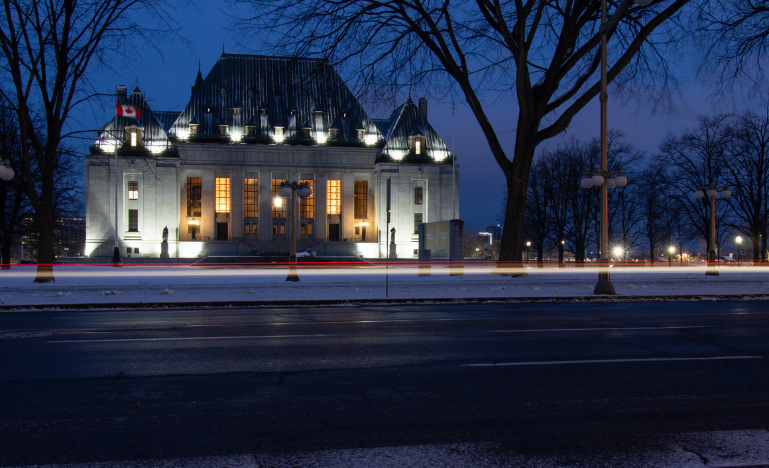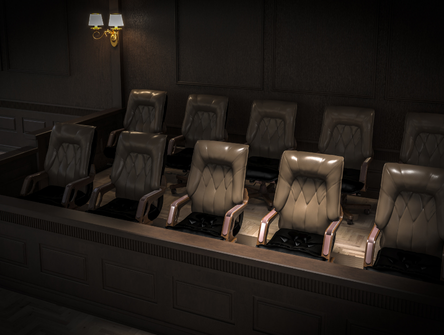Supreme cases: a look back and look ahead
Judgements, leaves and notables of 2024, and what's to come in 2025

The Supreme Court of Canada’s 2024 workload was not quite back up to pre-pandemic levels, but it has been getting closer. And because the Court will mark its 150th anniversary this year, it will take on additional functions to mark the occasion.
The Court granted 35 leaves in 2024, fewer than the 41 granted in 2023 and down from the high of about 50 in the early 2010s. Eugene Meehan, a partner with Supreme Advocacy LLP in Ottawa, says those numbers have been consistent over the past few years.
Drawing on his tracking of the Court's statistics, he says that the percentage of leaves granted remains low at about 6.5 per cent in 2024, though up from six per cent in 2023, which was the lowest in the past ten years. The high rates were ten per cent in 2014 and 2017. Those leaves do not include mandatory as-of-right appeals.
“Now that we’re well past the pandemic, a lower number of leaves granted is most likely a product of the Court being appropriately careful and measured, with scarce judicial resources, and ensuring matters are resolved in a timely manner,” Meehan says.
While there hasn’t been as much emphasis on criminal and Charter cases, the Court is dealing with everything from A to Z — agriculture to zoning.
“The Court has a fixed number of judges, so the ability to adjust to handle a larger volume of cases is limited, and additionally takes its role of setting a good example in terms of delay extremely seriously.”
Nadia Effendi, a partner at Borden Ladner Gervais LLP in Toronto and the firm’s national business leader in commercial litigation, also believes the country’s top court is no longer feeling the effects of the pandemic when fewer cases were coming up from the lower courts.
“One of the cases that will be heard this year involves a pandemic case and an interesting argument related to Section 6 of the Charter, which isn’t often looked at,” she says of the upcoming hearing in Canadian Civil Liberties Association, et al. v His Majesty the King in Right of Newfoundland and Labrador, a challenge of the province’s pandemic travel restrictions.
She thinks the lower rates of leave acceptance relate to the kinds of cases coming up through the lower courts, which the Supreme Court may not feel meet the test of being issues of national importance.
“If it’s something right now that appears to be affecting one party or one province, with the exception of Quebec, the Court might wait until there’s more controversy before they grant leave,” Effendi says.
The Court released 44 judgements in 2024, up from a ten-year low of 34 in 2023 but below the 54 released in the two previous years. The ten-year average has been around 60 per year. Effendi notes that the Court tracks decisions slightly differently and will count a single set of reasons for two related cases as two separate decisions.
Five of those 44 were oral reasons from the bench, which were all as-of-right appeals (and did not require leave to appeal). Three more judgments came from the bench, which had written reasons that followed later. Only two of those were criminal matters; the third was a civil case relating to child custody where the Court felt an immediate ruling was necessary.
“The Court is settling into a number of appeals that it can hear and decide without the risk of slipping into having a backlog,” Meehan says.
As for the subject matter, criminal law remains first mainly because of the as-of-right appeals, many of which get decided from the bench. The balance of cases are non-criminal public law and private law matters, with public law matters representing the larger share. There were also five decisions related to Indigenous law.
“This makes sense as those cases require leave, and the test for leave involves public importance,” Meehan notes.
The number of private law cases being heard remains steady at eight, and that has been consistent over the past few years.
“The Court is signalling it wants to maintain a certain balance and demonstrably avoid any suggestions that it is becoming overly focused on one area to the exclusion of others,” he says.
In terms of notable decisions, both Meehan and Effendi point to the Reference re An Act respecting First Nations, Inuit and Métis children, youth and families, which was a unanimous decision authored by the Court.
“We have been hearing a lot of talk about self-government,” Meehan says.
“The federal government showed some walk by enacting legislation that provides Indigenous peoples with effective control over children’s welfare. The Court found the Act as a whole is constitutionally valid, and this could be seen as a green light to explore and expand other similar initiatives.”
Meehan also points to Shot Both Sides v. Canada and Ontario (Attorney General) v. Restoule, where the Court had some “pointed and choice words” for the Crown for shirking its obligations to Indigenous peoples.
“The Court also issued some robust declaratory relief to avoid the Aboriginal parties being left with an empty shell of a promise once again,” he says.
Effendi points to Auer v Auer and TransAlta Generation Partnership v Alberta as long-awaited decisions where the Court clarified what standard of review applies to reviewing regulations.
“That question had been left open in Vavilov and created uncertainty,” she says.
“For a unanimous court, Justice Côté dismissed both appeals and confirmed the presumptive standard of review of reasonableness. I think we’re starting to see in admin law that the Court is becoming much more aligned, and that is interesting, and it provides a bit of stability for practitioners.”
As for what’s to come in 2025, Effendi is looking forward to Pharmascience Inc. v. Janssen Inc., a patent case involving invalidity. In hearing it, the Court must determine the applicable legal framework for assessing whether a claimed invention is a patentable medical treatment. She also looks forward to Ryan Alford v. Canada (Attorney General), which has a constitutional question that will determine the limits of parliamentary privilege regarding secret national security information.
“It will be very interesting to see what comes out of that one."
The upcoming hearing on Kuldeep Kaur Ahluwalia v. Amrit Pal Singh Ahluwalia is also on Effendi's radar as she’s eager to see whether the Supreme Court will recognize the tort of family violence, given that the Ontario Court of Appeal did not.
Meehan looks forward to the release of Attorney General of Ontario v. Working Families Coalition (Canada) Inc., et al.
“At issue is the constitutionality of limits imposed by the Ontario Election Finances Act on third-party political advertising spending and whether it violates Section 3 of the Charter and the rights of voters to meaningful participation via an informed vote,” he says.
“This could have a significant impact on electoral spending rules.”
R. v. Singer is being heard in February, and two of his colleagues are arguing it. It centres around an individual who was breath-tested in his driveway after falling asleep.
“It looks in part at the privacy rights Canadians have in our driveways, so although it’s a criminal matter, it could potentially have some larger implications,” Meehan says.
“The Court has been looking a lot at informational privacy, such as text messages and IP addresses, in the past few years, and this one focuses more on territorial privacy.”
Effendi says she would be remiss without mentioning the translation controversy as one of the notable events happening with the Court in 2024. She also notes that the Court has become increasingly active in denying interventions to certain groups, particularly after concluding that they plan to add new issues or expand the scope of the appeal.
“We saw in 2024 a few of those decisions,” she says.
“Frankly, for the bar and the parties that appear before the Court, it is helpful to have those kinds of reasons and explanations as to why.”
To mark the Court’s 150th anniversary, justices will travel to four cities—Victoria, Moncton, Sherbrooke, and Thunder Bay—to hold legal symposiums instead of hearings, as they did in Winnipeg and Quebec City in recent years.
“It may be a bit of a test run to see if more trips are possible and what formats are best received,” Meehan says.
Effendi says that Chief Justice Richard Wagner has made the Court more accessible to the public through these kinds of visits, which enhances knowledge of the Court’s work.
“That’s good for the Court as it reflects on its legacy over the past 150 years,” Effendi says.
Come fall, the ceremonial Opening of the Courts will return, something Meehan is looking forward to.
“They haven’t done this since the mid-80s, but it’s good to see it return as it helps build a community around the Court,” he says.


